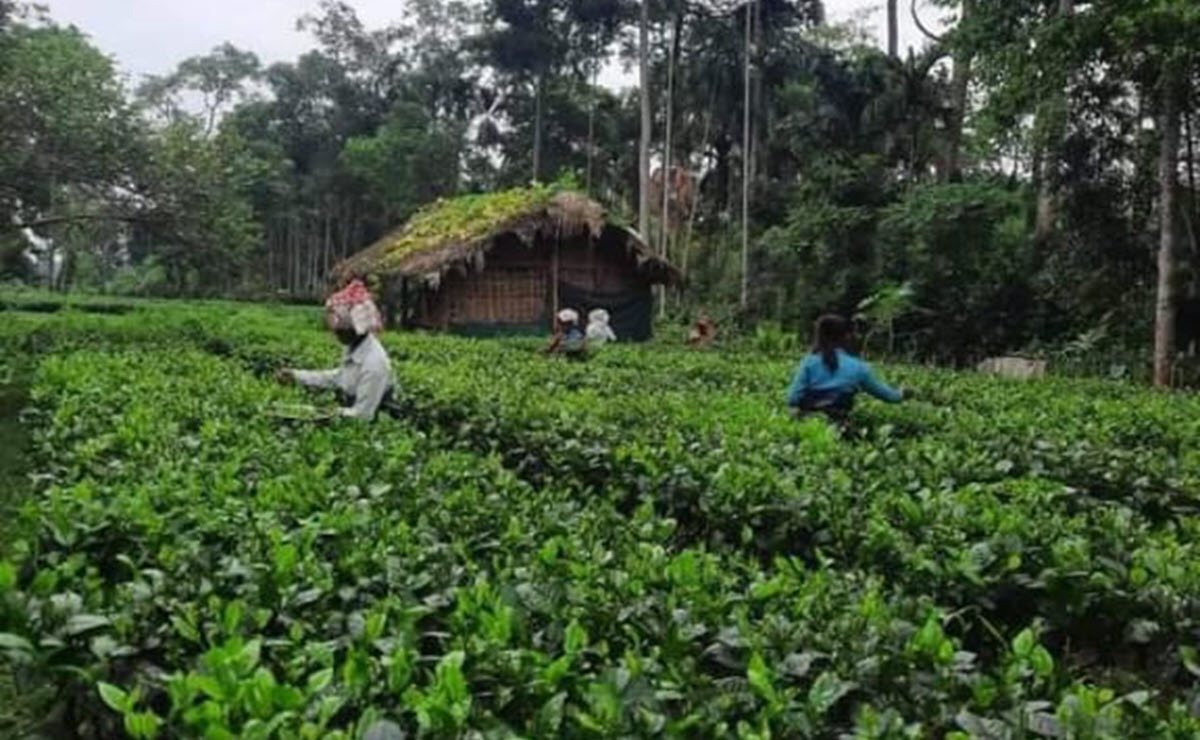India Chief Correspondent Aravinda Anantharaman reviews a momentous year for the tea sector in a country that produces 20% of the world’s tea. India’s tea drinkers are projected to consume 1.3 million metric tons of tea in 2022. Consumption outside the home (except in tea lounges and airports) has returned to pre-COVID levels and at 840 grams per capita, remains well below most countries, suggesting much room for growth. Her report is the sixth in the series of TEAIN22 year-end reviews and forecasts.
- Caption: Tea Board of India Chairman PK Bezboruah is leading the effort to reform India’s tea sector.
Hear the interview
Realigning India’s Tea Sector to Quality Production
By Aravinda Anantharaman
India’s tea industry in 2021 recovered from severe setbacks due to the pandemic. Fortunately, India’s domestic demand remained firm, consuming 75% of locally grown tea. Sales of out-of-home tea have since returned to pre-pandemic levels (except tea lounges and airports) with some consumer downgrade to unbranded tea due to inflation.
Production totals rebounded in 2021 but exports lagged as global prices fell and logistics costs soared. Rising energy prices and a shortage of containers led to high freight costs. Export volume declined to a five-year low of fewer than 200 million kilos. Kenya undercut prices at auction for commodity black teas.
The year saw the pilot of the Japanese auction model, now named the Bharat auction, that launched in South India in January.
Tea Board of India Chairman PK Bezboruah reports that high-quality teas were sold at a 150% premium over medium-quality teas in 2021. “The path forward for the organized sector is to focus on quality. Therein shines the silver lining,” he told the Times of India.
Vivek Goenka, Chairman of Indian Tea Association, said at the association’s 138th annual general meeting (virtual) that despite India’s distinguished status as the largest black tea producer in the world, Indian tea remains stressed owing to a decline in production of the organized tea sector, a decline in exports, a surge in tea imports, and prices insufficient to compensate for the high cost of production.
“Indian tea prices after remaining stagnant for almost a decade showed some promise in 2020 due to shortfall in production. However, in 2021 average prices have declined by 6%,” Goenka said.
He said the majority of teas are selling below INRs 200 per kilo which is below the cost of production of the organized sector.
“Over the past decade, we have seen only a marginal increase of the price of tea which has pushed the industry into a deep crisis. The average auction price moved from INRs 125 in 2012 to INRs 140 in 2019. Uncertainties triggered by the pandemic caused a spike in 2020 but for a limited period only to crash again in the current year with prices closer to 2019 levels. The industry cannot be sustainable and produce quality teas at the current price levels” he said.
He said at the current production level, the estimated turnover of the industry is around INRs 22,000 crores ($2.9 billion). “If the industry is to survive, be in a position to meet the growing aspirations of the huge number of people dependent on it and provide a reasonable ROI to the investors, the total turnover of the the industry has to increase substantially to Rs 35,000 crore ($4.68 billion).
“This increase cannot happen by way of a further increase in production but rather by an increase in price. Without a price increase, neither can the tea producer sustain, nor make quality teas” he said.
Tea Biz asked tea industry stakeholders Anshuman Kanoria, Chairman, Balaji Agro International, Head of India Tea Exporters Association and owner of Tindharia, Goomtee and Jungpana gardens in Darjeeling; and Pranav Bhansali, managing partner, Bhansali & Co., what to expect in 2022.
Production & Prices
The last two years came with severe disruptions because of the pandemic, and production was impacted in 2020, less in 2021. The other disruptor was climate change as the weather has become unpredictable. Unseasonal rainfall and prolonged drought have been extremely challenging.
Says Bhansali, “I think weather-related concerns are here to stay, North and South Indian rains have become unpredictable, and this has had an impact on prices as well demand supply dynamics.”
Production volumes are expected to increase, according to Kanoria, “With the small growers producing more, we can see the usual uptick in production, and around the same growth in domestic consumption.”
With prices, it’s evident that quality will fetch a good price, whether for CTC or Orthodox tea, says Kanoria, “A clear gap has opened in domestic Indian prices between good, medium and low CTC. The ease with which price barriers have been broken on the upside shows that good teas will continue to be well sought and fetch remunerative prices. For orthodox teas, compliance to international standards for MRL (maximum residue levels) will fetch better returns.”
Both Bhansali and Kanoria are concerned with an oversupply of medium and lower grade teas. Bhansali estimates that 2022 may see record production figures if other disruptions are contained.
Long Term Growth
Domestic consumption is closely tied to long-term population growth. The Economist Intelligence Unit predicts India’s domestic consumption will increase from 1.275 million metric tons to 1.339 million metric tons in 2022. This is due, in part, to the fact that according to the United Nations India will overtake China and become the world’s most populous country in 2027, with around 1.45 billion people. China’s birth rate is officially only 1.3 children for the average woman in her lifetime. The replacement rate to maintain a steady population is 2.1 births. India currently averages 2.0 births suggesting a much slower decline than China. China’s population is expected to fall from the current total of 1.41 billion people to around 700 million by 2100.

“There have been a lot of naysayers for this new auction system. I think it’s important to recognize that tea has and cannot be treated as a commodity market instrument because of its inherent nature of not being standardized.”
– Pranav Bhansali
Exports
The pandemic greatly impacted India’s CTC exports because of the low prices offered by African suppliers. Due to the rising cost of production, CTC faces competitive challenges in global markets but just how much will depend on the other suppliers. Bhansali said that Sri Lanka’s temporary ban on the use of chemical fertilizers and Kenya’s minimum floor price indicate that governments are making bold decisions, which could impact the entire industry.
Markets
The top three packeteers in India, Tata Consumer Products, Hindustan Unilever, and Wagh Bakri have increased their market share as small packeteers have struggled against the pandemic. Analysts point to a value opportunity from the transition from unpackaged (unbranded) tea to packaged tea products.
Reforms
Says Bhansali, “There have been a lot of naysayers for this new [auction] system. I think it’s important to recognize that tea has and cannot be treated as a commodity market instrument because of its inherent nature of not being standardized.”
Differing in his views, garden owner and exporter, Anshuman Kanoria said, “I am not a supporter of the proposed changes in the auction system. It is improper to thrust an auction system on buyers that is not supported by most stakeholders. Trials have not shown any benefit. Unfortunately, whenever taxpayer money is spent on expensive consultants, a need is felt to accept the report and implement some changes to justify the expense.
The existing auction system was working fine and producers that complain about it are largely those who have quality issues, or who dump leftover teas into the system. The focus should have been on improving the auction functioning and competition, infrastructure, rather than the rules.”
In 2022, the Tea Board has signaled that it will move ahead with reforms. Some of what’s being asked, include
- Regulate the import of duty-free tea into India that was intended for re-exports but has instead been dumped in the domestic market. There is a need to ensure that all tea exported as Indian tea must contain 100% Indian tea.
- Ensure Nepal tea is not passed off as Darjeeling tea, which includes regulation and testing of all Nepal tea entering India.
- FSSAI must tighten the laws for Maximum Residue Levels so that more tea is in line with EU norms and therefore boost demand.
- Dissociate from auctions and hand over the running of the auction to respective auction committees that already exist and mode and manner of conducting such auctions should be at the discretion of stakeholders.
- Tea Board itself needs to be re-modeled to become a promotion and development directorate rather than an over regulator.
While it’s expected that the Tea Board will reinvent itself as a Promotion and Development board, Kanoria also highlighted Darjeeling’s challenges and the need to develop its markets in China, Russia, Iran, the USA, and Japan. He was hopeful for an infrastructure development scheme offering a one-time subsidy to develop warehouses and packaging to promote the “Make in India” packs. On tea wages and input costs, he adds that while costs are set to rise, he hopes that dialogue with government and trade unions is not centered around wages alone but in enhancing productivity and in ensuring the financial sustainability of the tea estates.
Related
Link to share this post with your colleagues
Signup and receive Tea Biz weekly in your inbox.




